
CIPPE, full name is China International Petroleum & Petrochemical Technology and Equipment Exhibition. It is hold at in Beijing every year in March. CIPEE is the 2nd largest oil show in the world. The largest oil show is OTC in Houston every May.
2015 CIPPE address: the New China International Exhibition Center
2015 CIPPE time: 26 ~ 28, 2015
GN booth No.: HALL E1 -E1360
Plane graph: http://public.cippe.com.cn/static/hall/2015bj/hall_e1.jpg
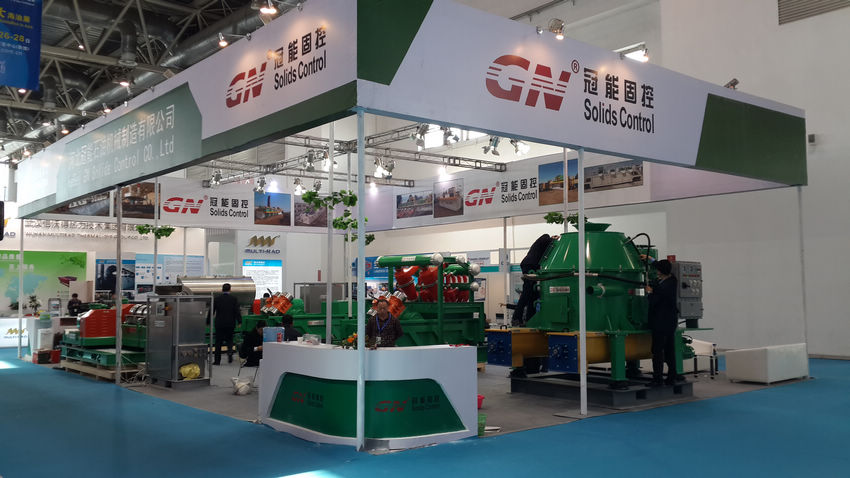
As China top manufacturer on solids control drilling mud system and drilling waste management equipment, GN solids Control attend Beijing CIPPE since 2009. Every year, GN takes its latest design products for the show, customer can see GN fast growing through GN equipment upgrading.
Besides solids control equipment, drilling waste management equipment is GN advantages in international market. Below is what GNwill show in 2015 CIPPE:
Part 1: Drilling cuttings drying system for waste management
It is a complete system composed of below equipment:
a. Mud tank system
b. Vertical cuttings dryer GNCD930C, it can reduce OCC to 3~5%.
c. High speed decanter centrifuge 14’’, international high standard and the latest design 3rd generation model GNLW363C-VFD, and feed pump
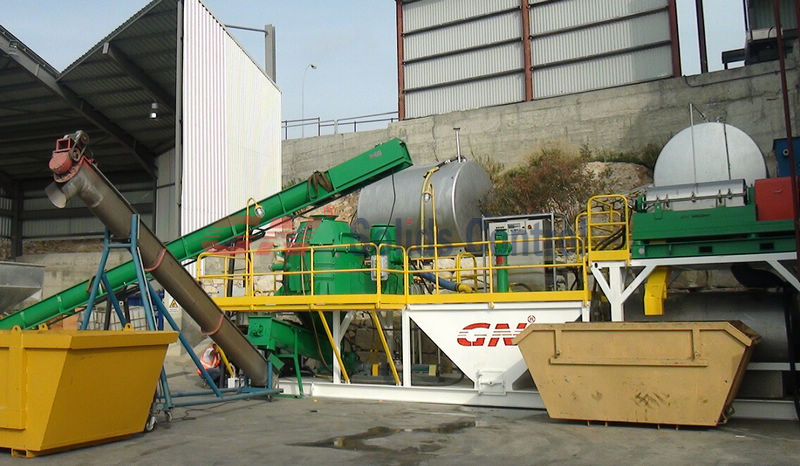
Part 2: Solids Control equipment
a. Solids Control shale shaker: GNZS594E-HB.It is a 4-panel shale shaker with composite material shaker screen dimension 1165*585*40mm. It is normal size screen model can interchangeable with other brand shaker, and customer is easy to source or stock replacement screen.
b. Mud cleaner: GNZS703E-2S12N, Capacity: 1056GPM. It is the combination of a shale shaker GNZS703E, 2 each desander and 12ea desilter.
c. Mini mud cleaner: GNZS752E-12N. Capacity: 1056GPM. It is a desilter separator with a small side under flow shale shaker (2-panel). The price is much lower than mud cleaner and performance much better than desilter hydrocyclone separator.
d. Different size decanter centrifuge:
8’’ mini centrifuge GNLW223, 40GPM, 3800rpm
18’’ low speed centrifuge GNLW452, 250GPM, 1800rpm
22’’ big bowl centrifuge GNLW553C-VFD, 484GPM, 2500rpm
14’’ decanter centrifuge as the most common model showed in part 1 Drilling cuttings drying for vertical cuttings dryer.
GN value-additional service for 2015 CIPPE:
1) GN factory is only 40km away from the exhibition. GN offers free shuttle bus between CIPPE and GN factory
2) GN can help customer on airport pick-up and hotel-booking during CIPPE.
If you have interest to come and visit, please contact GN group freely for arrangement. Contact information:
Email:
This email address is being protected from spambots. You need JavaScript enabled to view it.
/
This email address is being protected from spambots. You need JavaScript enabled to view it.
If you do not have time and will miss 2015 CIPPE, no worry, we can also meet in 2015 OTC. GN Solids America welcome your visit.
- Details
-
Published: 31 December 2014
Vertical cuttings dryer & decanter centrifuge (high speed / big bowl) is the 2 most common equipment for drilling waste cuttings treatment. They are normally used together. Their main function is utilizing centrifugal force to separate solids from drill mud. But they have different applications.
Applications of Vertical cuttings dryer for drilling waste management

GN Vertical Cuttings Dryer utilizes centrifugal force to dry drilled solids in oil or synthetic base mud cuttings. It can also be used to treat water base mud cuttings. A stainless steel screen bowl traps “wet†solids and accelerates them up 900RPM with G force up to 420. Liquid is forced through the screen bowl openings, while “dry†particles are discharged by the angled flights attached to the cone, which rotate slightly slower than the bowl. Tungsten carbide protects the flights from abrasive solids and ensures long operational life.
Applications of decanter centrifuge for drilling waste management
GN makes different sizes decanter centrifuge. There are 8 inch baby centrifuge, 14 inch normal size decanter centrifuge, 18’’ and 22 inch big bowl centrifuge. drilling waste management normally utilize high centrifuge force to separate fine solids. Take GN 14 inch decanter centrifuge for example, the max. speed is 3900rpm. Typical speed with load can reach up to 3200rpm, and the G force is 2062 @ 3200rpm. The separation point is 2~5 microns.
Difference of Vertical cuttings dryer & decanter centrifuge in drilling waste management system
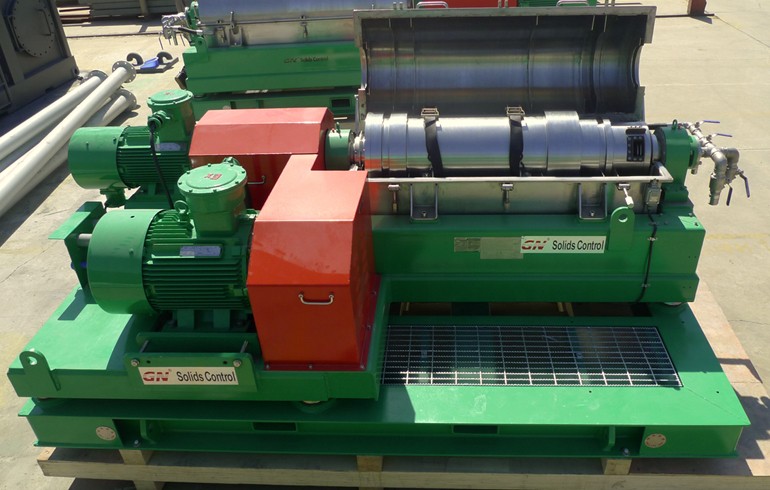
Drilling waste management system, also be called drilling cuttings drying system. Vertical cuttings dryer & decanter centrifuge is the main machine of the drying system. With its patent design, GN vertical cuttings dryer can be used for oil base mud and water base mud, as well as SBM. With the same system, customer can treat all kinds of drilling waste cuttings.
In drying system, vertical cuttings dryer is used firstly to separate the coarse solids in cuttings. And the discharged solids is drying enough for truck shipment. Take GNCD930C dryer for example, when treat Oil base mud, after treatment, OOC can be reduced to around 4%).
After vertical cuttings dryer, there are high content fine solids in the liquid phase, decanter centrifuge is used to further separate the fine solids and reduce the mud weight.
- Details
-
Published: 26 December 2014
GN exported a drilling cuttings drying system to Europe. The drilling waste management system is used to treat oil based drilling cuttings collected from oil drilling rig. Customs move drilling cuttings from offshore drilling rig to their yard for treatment. GN sent engineers to help them for commissioning and training their people for system running. The performance is good, customer is satisfied.
Equipment included in the drying system to Europe offshore rig
1) Vertical cuttings dryer: Model GNCD930C-VFD, Qty 1 each
Customer choose variable speed control panel for the dryer. The speed can be adjusted from 0~900rpm, while G force can be adjusted to max. 420G. Customer can choose the suitable speed per job site condition.

2) Decanter centrifuge, model GNLW363BG-VFD, Qty 1 each
It is a variable frequency control decanter centrifuge, with positive pressurized control panel for changing speed.
This decanter centrifuge is used to separate the solids from the liquid discharged from the vertical cuttings dryer. After separation by the GNLW363BG-VFD decanter centrifuge, the oil or water recycled from cuttings dryer can be returned to the active drilling mud system for reuse.
3) Mud tank skid for mounting above solids control equipment.
4) Screw conveyor ( Augers) for feeding the vertical cuttings dryer with the drilling waste and also for transporting the drilling cuttings discharged from the decanter centrifuge and the vertical cuttings dryer.
Below is the raw material comes from rig site. It is mixture of oil, cuttings and drill mud.
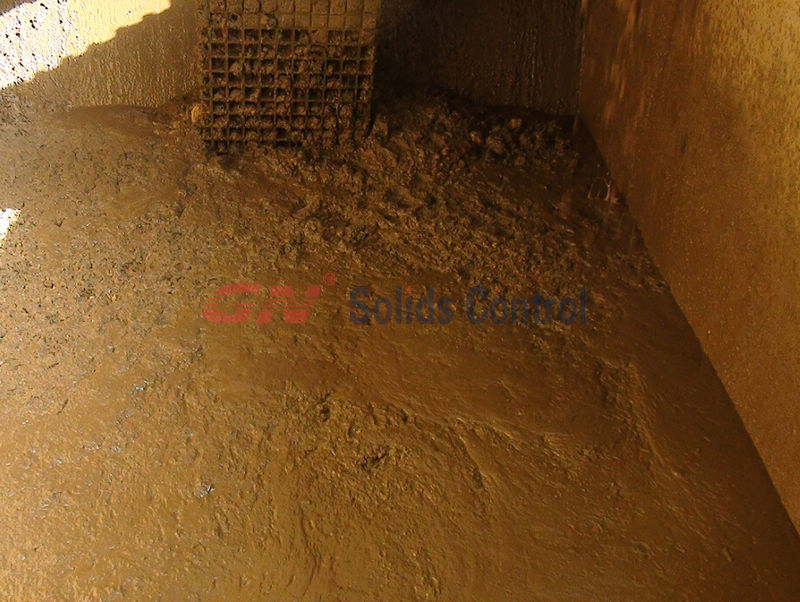
After treatment of GN drying system, the OOC on cuttings can be reduced to less than 4%.
Below is the solid phase separated from GN drying system.

As you can see from blow picture, after separation, the liquid is very dry and difficult for decanter centrifuge to treat. In order to make it flowable and possible for centrifuge treatment, customer dilute it and to further separate the fine solids above 2~5 microns.
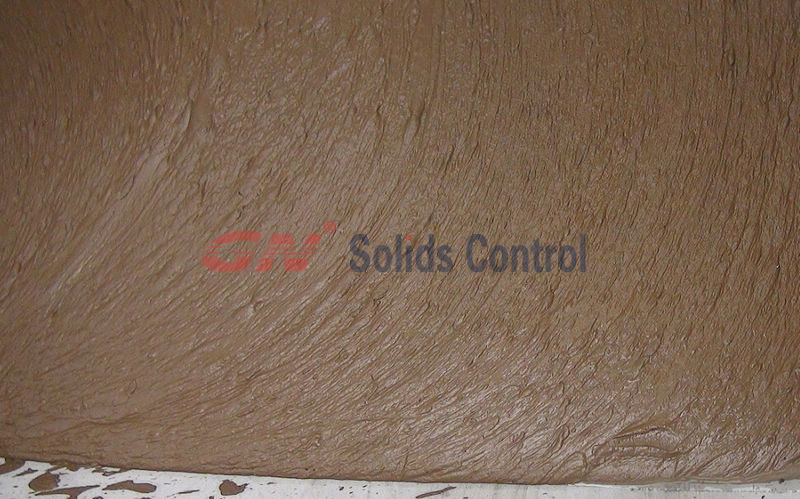
GN Solids Control Drilling Cuttings drying system is popular around the world from Asia to Europe , and from America to Russia.
- Details
-
Published: 22 December 2014
Vertical cuttings dryer is the main machine used to treat oil base mud drilling cuttings. It is normally used together with high speed decanter centrifuge, screw conveyer and Thermal Desorption unit.
GN brand Vertical Cutting Dryer utilize centrifugal force to treat drilling cuttings. For other brand vertical cuttings dryer, they can only treat oil base mud or or synthetic base, they cannot be used to treat water base mud. GN brand vertical cuttings dryer. with its patent design, can treat both water base mud and oil base mud, as well as synthetic base mud. And it can be used in most critical condition jobsite.
A stainless steel screen bowl traps “wet†solids and rotating them up to 900RPM with G force up to 420. Liquid is forced through the screen bowl openings, while “dry†solids are extracted by the angled flights attached to the cone, which rotate slightly slower than the bowl. Tungsten carbide protects the flights from abrasive solids and ensures long operational life. This aids in maintaining a constant gap between the scroll and screen bowl, which is crucial for proper operation. GN cutting dryer has been done strict balance testing for all major rotary components to minimize vibration & noisy.
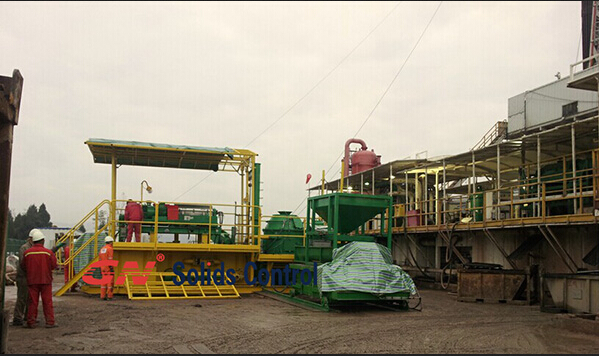 |
Vertical cuttings dryer for oil base mud
As the necessary machine to treat oil base drilling cuttings, vertical cuttings dryer can reduce the oil on cuttings to 3~5%. Per Job site report, GN Second generation vertical cuttings dryer can reduce OOC (oil on cuttings) to 3.7% or less. It can greatly release the upstream processing machine capacity.
Compared with oil base mud, water base mud drilling cuttings is more critical for treatment. It is easy to block the screen basket and cause machine stop. GN second design vertical cuttings dryer with pressed air knife system for flushing the screen. It can be used to treat water base mud drilling as well. And the performance have been approved by job site test.
Customer can visit GN web site for job site video.
Video: GN Oil Based Drilling Cuttings Dryer for Shell Project
http://www.gnsolidscontrol.com/video/gn-oil-based-drilling-cuttings-dryer-shell-project
Video:GN Vertical Cuttings Dryer for water based mud drilling waste Management
http://www.gnsolidscontrol.com/video/vertical-cuttings-dryer-water-based-mud-drilling-waste

High G shale shaker can also used to treat water base mud. But it is not dry enough. With the high speed rotating, GN second generation vertical cuttings dryer GNCD930C can reduce the water on cuttings to a lower rate and make it easy for trailer movement.
- Details
-
Published: 06 December 2014
GN Solids Control, as China top solids control manufacturer, exported 4 complete sets solids control equipment for 1000hp land drilling rigs to an North America drilling company. The drilling company also includes some replacement equipment for their previous land rig mud systems.
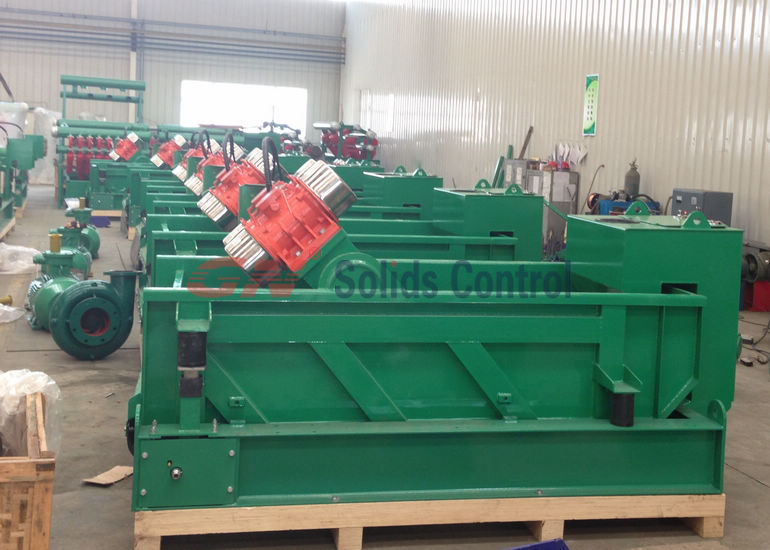
The order includes below solids control equipment:
1) Linear motion shale shaker model GNZS594E-HB, quantity 10 each
2) Vacuum degasser GNZCQ270A, Quantity 4 ea
3) Desander mud cleaner, quantity 5 ea
4) Desilter mud cleaner: quantity 7 ea
5) Different models centrifugal pumps, quantity 25 ea
6) Mud agitator, quantity over 40 ea
7) Other replacement spare parts.
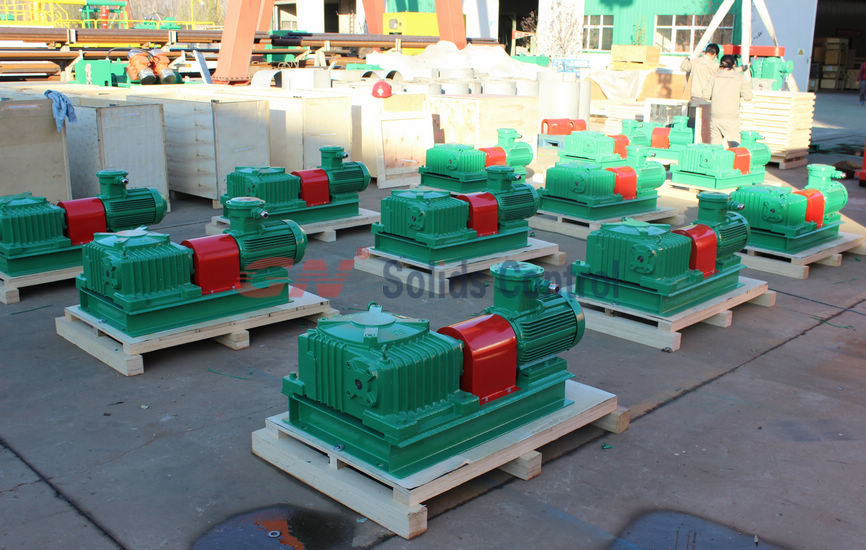 |
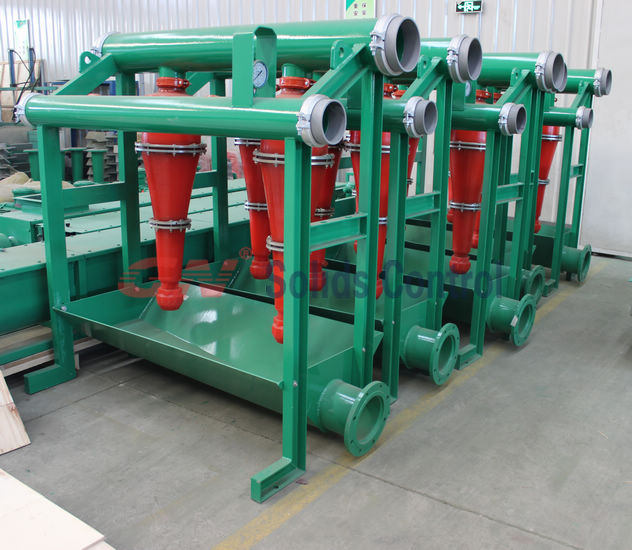 |
There are so many companies in China and out of China, why the customer finally choose GN after comparison?
1) GN Solids Control is the 1rst API certified solids control company in China. Now GN have CE certificate approved by DNV for European market.
2) GN is the first China solids control manufacturer who registered in Houston America and have a separate brand GN Solids America. All GN equipment made per international high standard.
3) GN company mission: Top brand and reasonable price. No lower, no higher.
4) As the fast developing company, GN think highly of customers’ feedback and keep improving quality and design.
5) GN centrifugal pump interchangeable with NOV mission pump. It makes customers easy for replacement and for stock spare parts.
6) GN have shaker model interchangeable with Swaco Mongoose and Derrick.
Besides mud solids control equipment, GN also make drilling cuttings treatment equipment.
GN offer one-stop solution for drilling rigs.
Below is the main drilling waste management equipment GN makes:
1) Drilling cuttings screw conveyer
2) Vertical cuttings dryer for both oil base mud and water base mud. The performance approved by jobsite test. While other brand, they can only be used for oil base mud.
3) High G drying shaker for water base mud
4) Big bowl decanter centrifuge and super high speed centrifuge
5) Dewatering unit for waste water treatment or water base mud treatment.
- Details
-
Published: 21 November 2014
Decanter centrifuge is an important and relative cost high equipment in solids control and drilling waste management equipment. It has an important role on the total system performance. There are so many companies announced for decanter centrifuge manufacturing, especially in China. But do you know how to choose the right one for your drilling waste management project?

As the first China solids control manufacturer who have warehouse in Houston, GN Solids Control give suggestions as below:
1) Check the parameters: To check if the offered centrifuge can meet your request.
2) Check the company’s project list, to make sure they have experience on your field. If you are searching for a centrifuge for drilling cuttings treatment, companies who make centrifuge for pharmaceuticals industry, food industry or solids control should not be suitable. If possible, to talk with the people who used their equipment or to check their jobsite.
3) To check the centrifuge material: For drilling waste management, centrifuge materials should be the highest ranking. It should be very strong and good performance for anti-abrasive.
Bowl material: Duplex Stainless Steel 2205 by centrifugal casting is the best. Derrick centrifuge and Swaco centrifuge made by it. It is excellent and reliable. SS316L is the second option. While SS304 and SS302 not recommended.
4) Screw protection: best option is interchangeable Tungsten Carbide Tiles. Second option is ceramic tiles if your budget is very tight, or just want a cheaper one. Hard surface welding for screw project is not recommended.
In the first year or half year, there maybe not much difference, but after 1 year, the hard surface welding will be worn out. It is difficult for maintenance, and you have to make balance again after welding repair. But the interchangeable tiles, you only need to remove the broken one and change it with a new one.
5) To check the companies’ facility and capability. Centrifuge manufacturing have a high standard request on manufacturer’s capability. It you intend to order from a company, it is better you pay a visit to their company, to check their workshop, see which material they use, how they make, which kind of processing machine they have. CNC machine and Five-face processing machine, dynamic balance machine is the necessary for centrifuge processing.
6) VFD Control panel: Possitive pressurized VFD panel with self-cooling is necessary. Flameproof cannot cool down and cannot exactly meet the EX standard. 3 VFD for main drive motor, back drive motor and feeding pump also the best. If there is PLC for smart control, perfect.
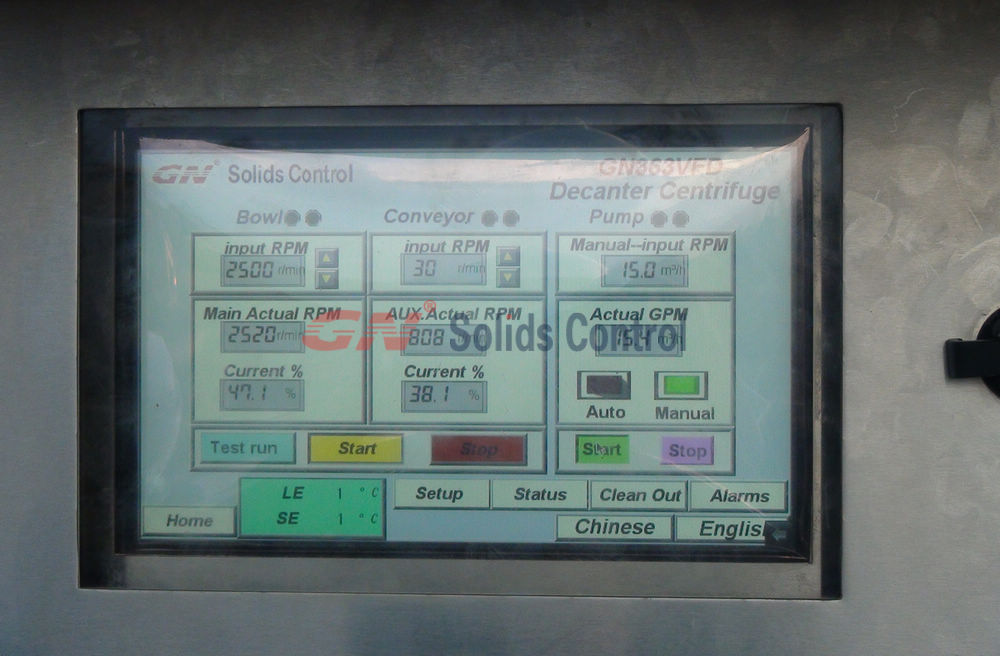
7) To check the price: The lowest price surely can be considered. If the price is even much lower than the market average, where they get benefits? Surely the quality cannot be good.
8) To check besides decanter centrifuge, what other equipment they can make for drilling waste management, like high G dryer shaker, screw conveyer, dewatering unit... If they can meet all above, and they can offer you complete solution on drilling cuttings treatment.
If there is a company can meet all of them, then you can consider. If you have any other questions on solids control equipment or drilling waste management, welcome you contact GN Solids Control freely.
- Details
-
Published: 01 November 2014